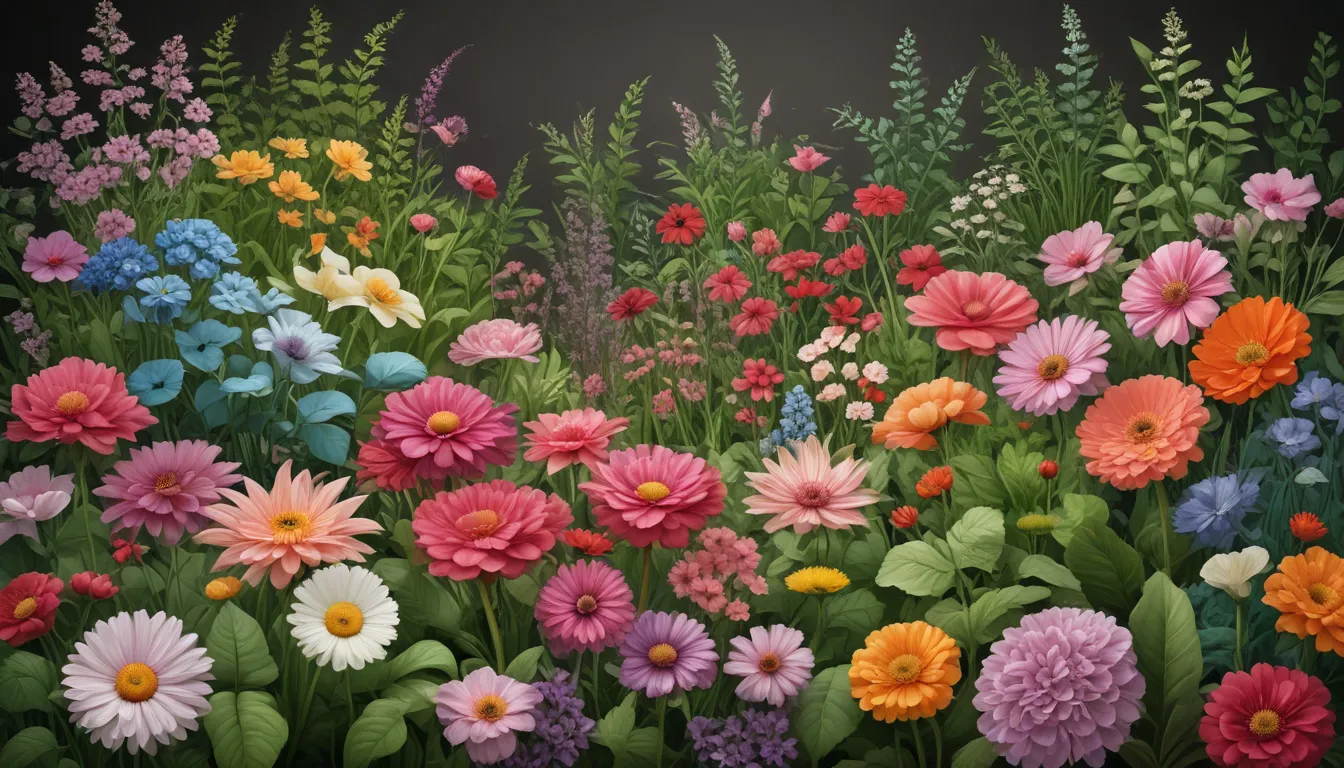The pictures we use in our articles might not show exactly what the words say. We choose these pictures to make you interested in reading more. The pictures work together with the words but don’t take their place. The words still tell you the important facts.
Flower gardening is more than just a hobby; it's a creative outlet that nurtures a love for nature and promotes mental well-being. Whether you're an experienced gardener or just starting out, diving into the world of flower gardening can transform your outdoor space into a vibrant oasis. In this comprehensive guide, we'll explore 22 essential facts about flower gardening to help you create a stunning and healthy garden that blooms year-round. Get ready to enrich your gardening knowledge and embark on an inspiring outdoor project!
Why Flower Gardening Is Special
Flower gardening offers a unique way to add beauty, color, and fragrance to your outdoor space. Unlike vegetable gardening, which focuses on food production, flower gardening is all about creating a visually stunning landscape that attracts beneficial insects and supports biodiversity.
- Flowers can improve mental health by reducing stress and promoting happiness.
- Beneficial insects like bees and butterflies are essential for pollination and biodiversity.
Selecting the Right Flowers for Your Garden
Choosing the right flowers for your garden involves considering factors such as climate, soil type, and sunlight availability. Whether you opt for annuals, perennials, or native plants, selecting the right flowers is crucial for a thriving garden.
- Annuals like petunias and marigolds offer vibrant colors but need to be replanted each year.
- Perennials such as lavender and peonies return year after year, making them a long-term investment in your garden's beauty.
- Native plants are resilient and require less maintenance due to their adaptation to local climate and soil conditions.
Tips for Maintaining a Healthy Flower Garden
Proper care and maintenance are essential for a thriving flower garden. From watering to mulching and deadheading, ensuring your flowers receive the care they need will result in vibrant blooms and a flourishing garden.
- Regular watering is essential, but be cautious of overwatering to prevent root rot.
- Mulching helps retain soil moisture, suppress weeds, and add nutrients to the soil.
- Deadheading encourages more blooms and extends the flowering season.
Enhancing Soil Health with Fertilizers and Amendments
Nutrients play a vital role in the growth and health of flowers. Organic and inorganic fertilizers, as well as soil amendments, can help enhance soil fertility and promote robust plant growth.
- Organic fertilizers like compost release nutrients slowly and improve soil structure.
- Inorganic fertilizers provide quick nutrient boosts but should be used sparingly.
- Testing soil pH and adjusting it with lime or sulfur can significantly impact plant health and flower production.
Managing Pests and Diseases in Your Garden
Pests and diseases can quickly impact the health of your garden. Integrated pest management strategies, companion planting, and natural remedies can help protect your flowers without relying heavily on chemicals.
- Companion planting with flowers like marigolds can naturally deter pests.
- Neem oil and insecticidal soaps are eco-friendly options for controlling common garden pests.
- Regular monitoring for signs of disease allows for early intervention and prevention of widespread damage.
The Beauty of Cut Flowers and Floral Arrangements
Creating cut flower arrangements from your garden adds a personal touch to your home decor. Certain flowers are well-suited for cutting and will produce long-lasting blooms in vases, bringing the beauty of your garden indoors.
- Floral arrangements made from home-grown flowers are unique and personalized gifts.
- Flowers like roses, lilies, and dahlias are ideal for cutting and arranging in vases.
Seasonal Planning for a Vibrant Garden
Seasonal planning ensures a continuous display of color and interest in your garden throughout the year. From planting bulbs in the fall to succession planting, careful planning can transform your garden into a blooming paradise.
- Planting bulbs in the fall provides early spring color.
- Succession planting extends the flowering season by staggering planting times.
- Fall gardening tasks prepare the garden for winter and ensure a healthy start to the next growing season.
Supporting Wildlife with Your Flower Garden
Flower gardens can attract birds, butterflies, and other wildlife, providing food, shelter, and nesting sites. Creating a diverse garden ecosystem benefits both your garden and local wildlife.
- Birds are attracted by seeds from flowers like sunflowers and coneflowers.
- Butterfly gardens support butterfly populations and provide opportunities for observation.
In conclusion, flower gardening offers a wealth of benefits for both the environment and the gardener. By embracing local flora, practicing proper care and maintenance, and fostering a love for the natural world, you can create a stunning garden that thrives year after year. So grab your gardening tools and embark on a journey to cultivate a blooming future filled with endless beauty and biodiversity. Let's make our world a bit more colorful and fragrant, one garden at a time. Happy gardening!






